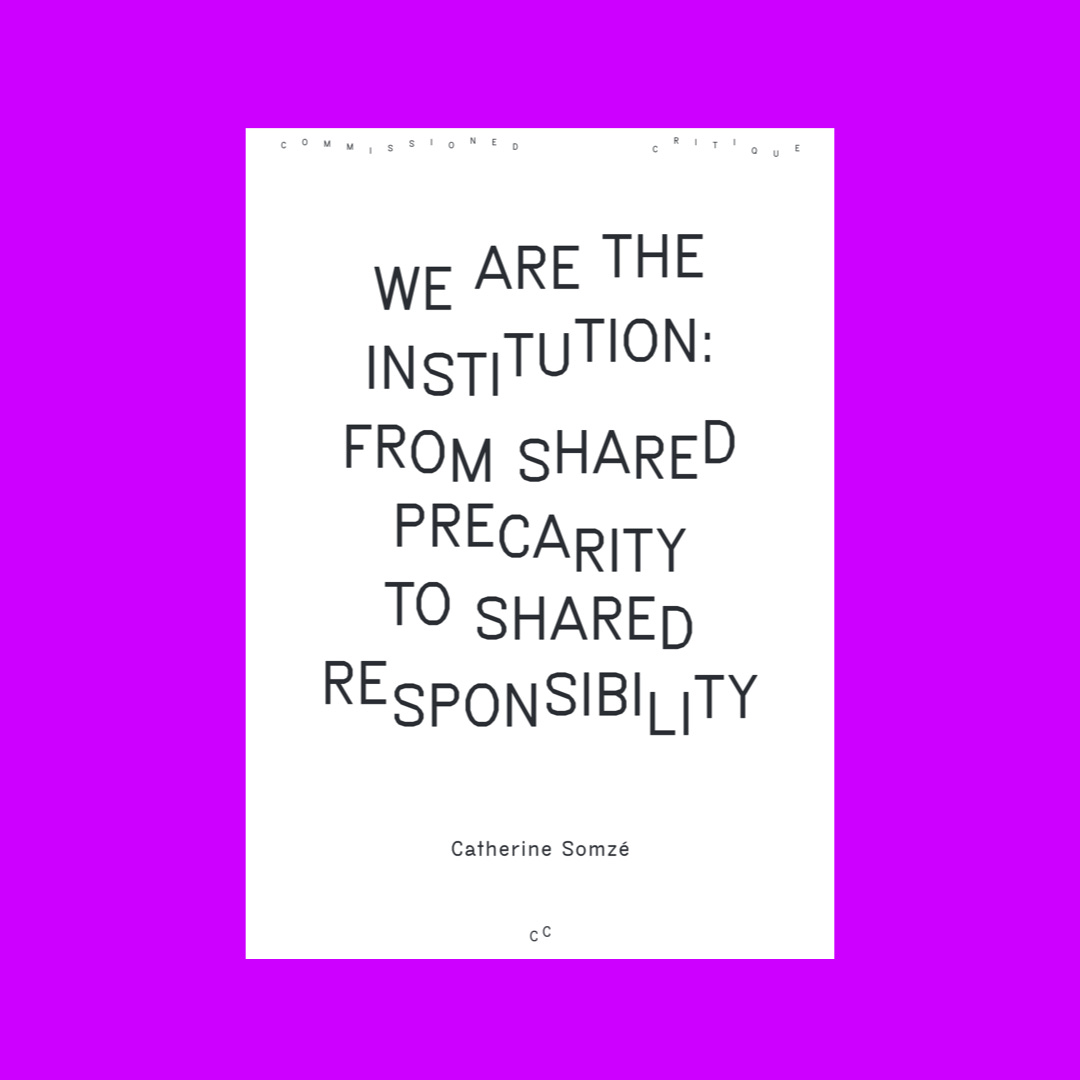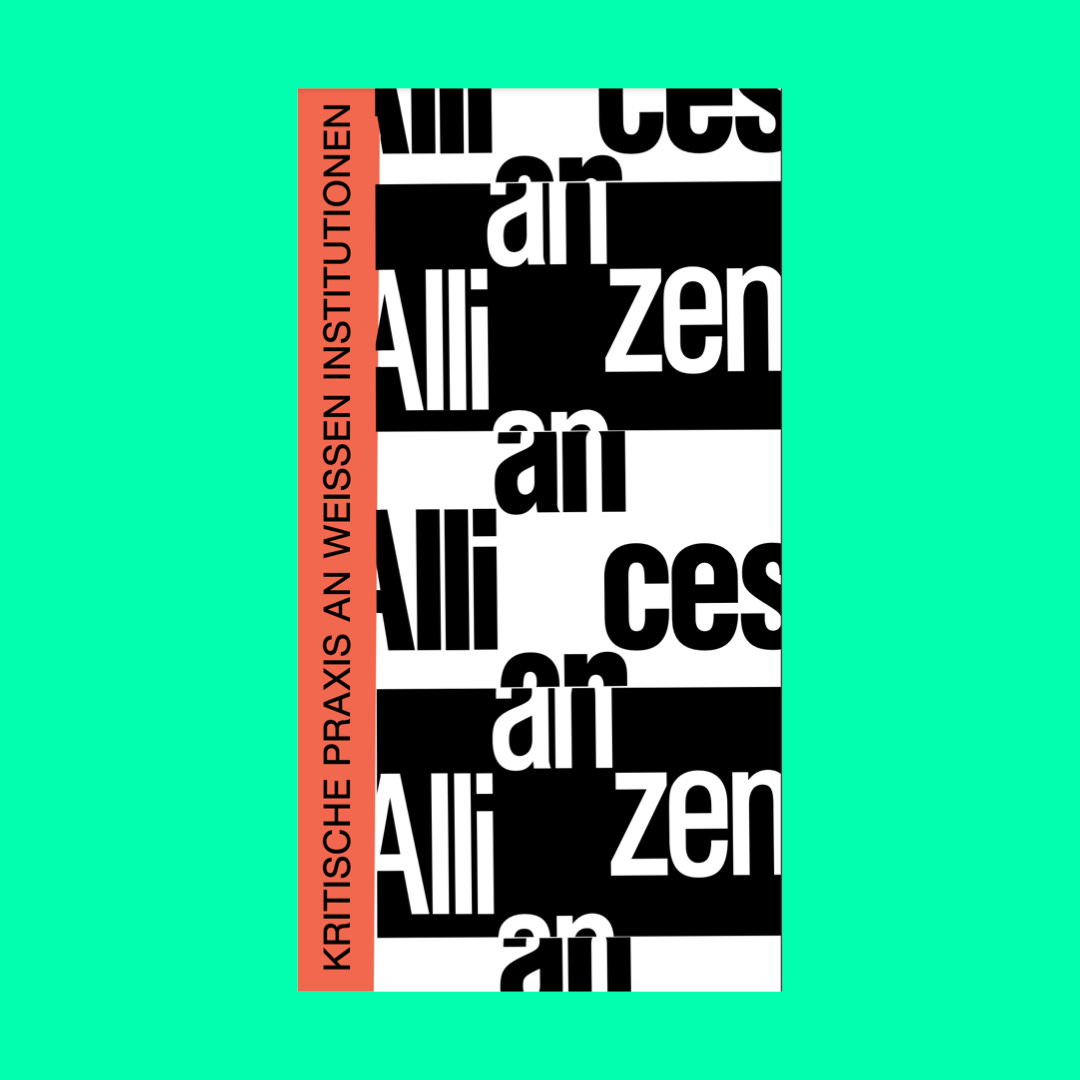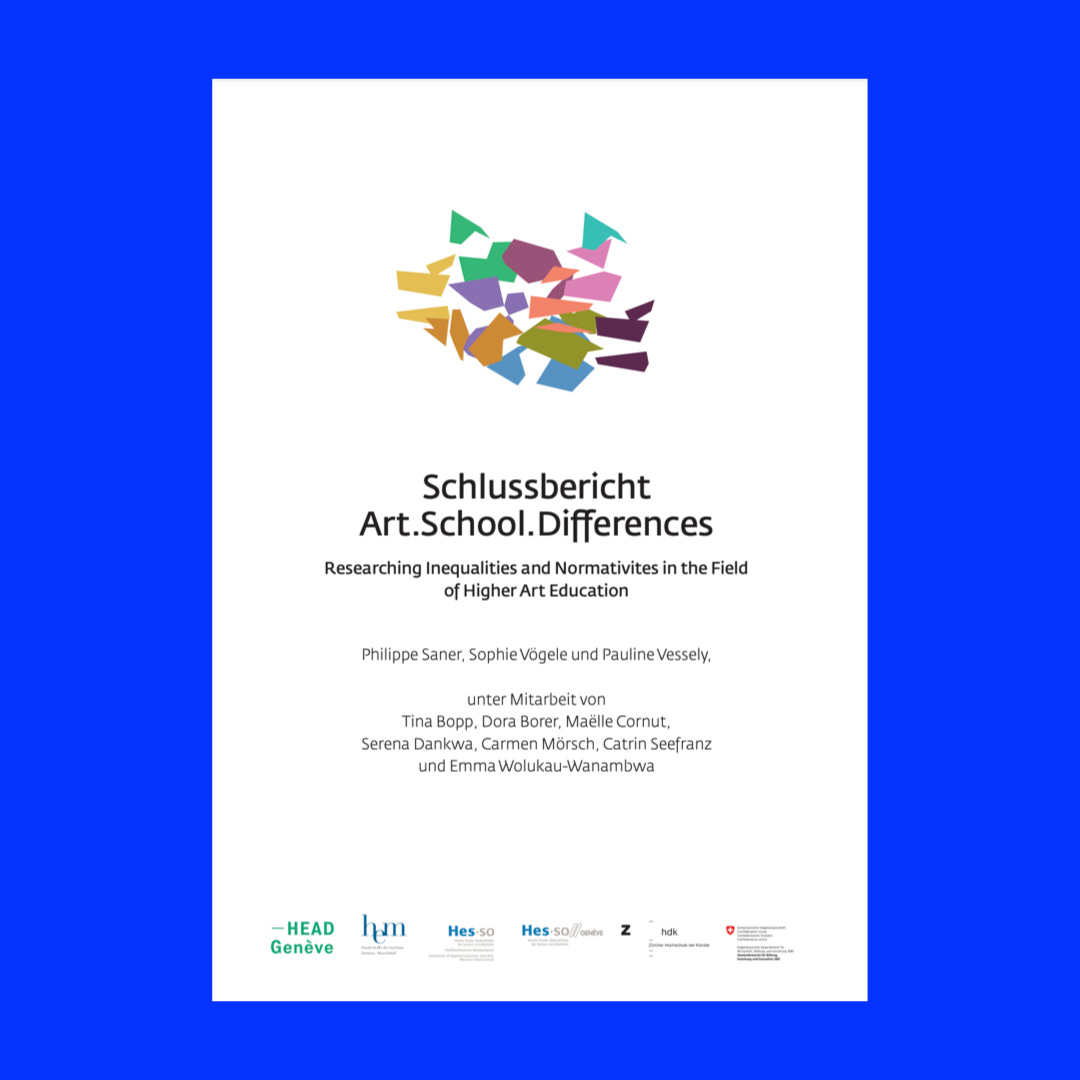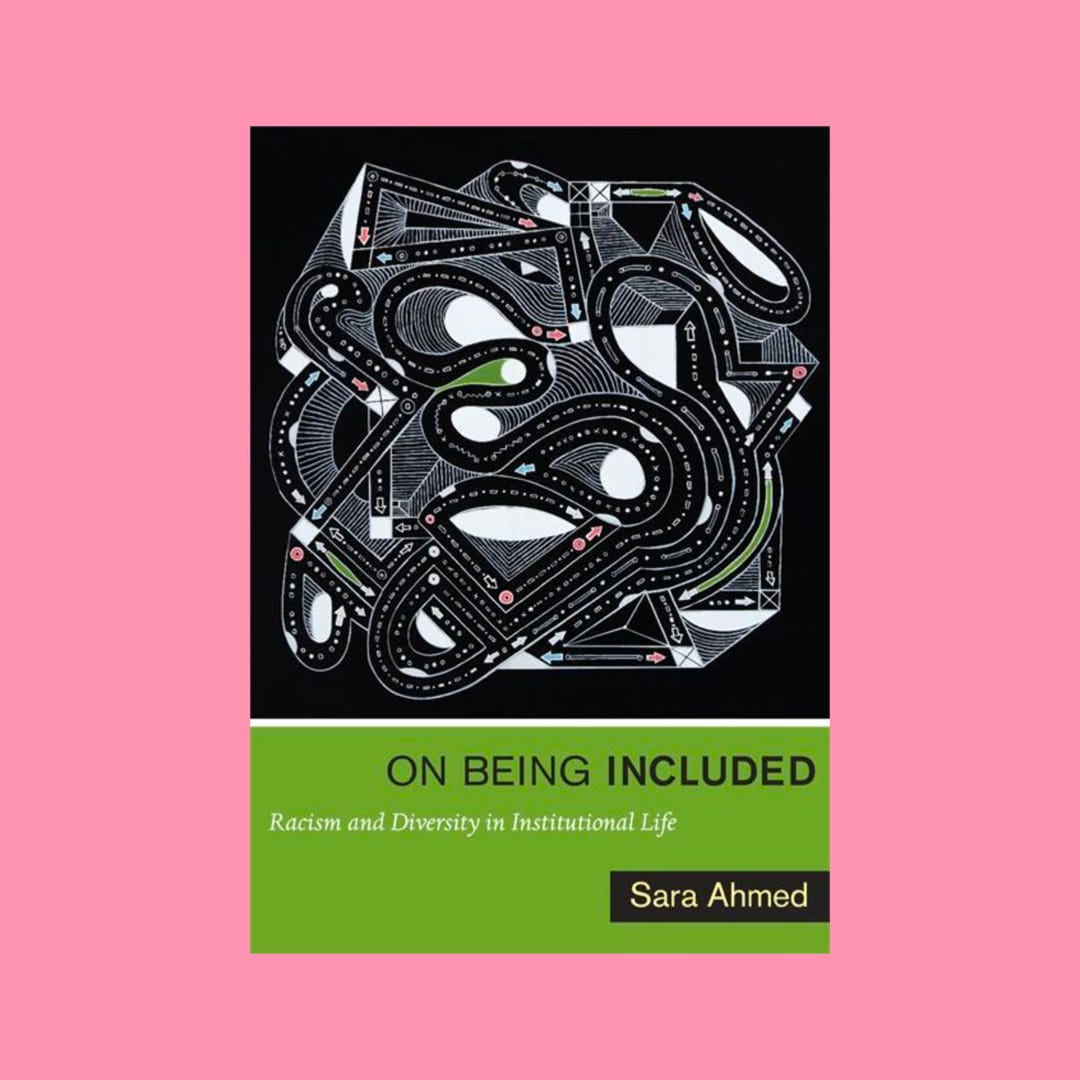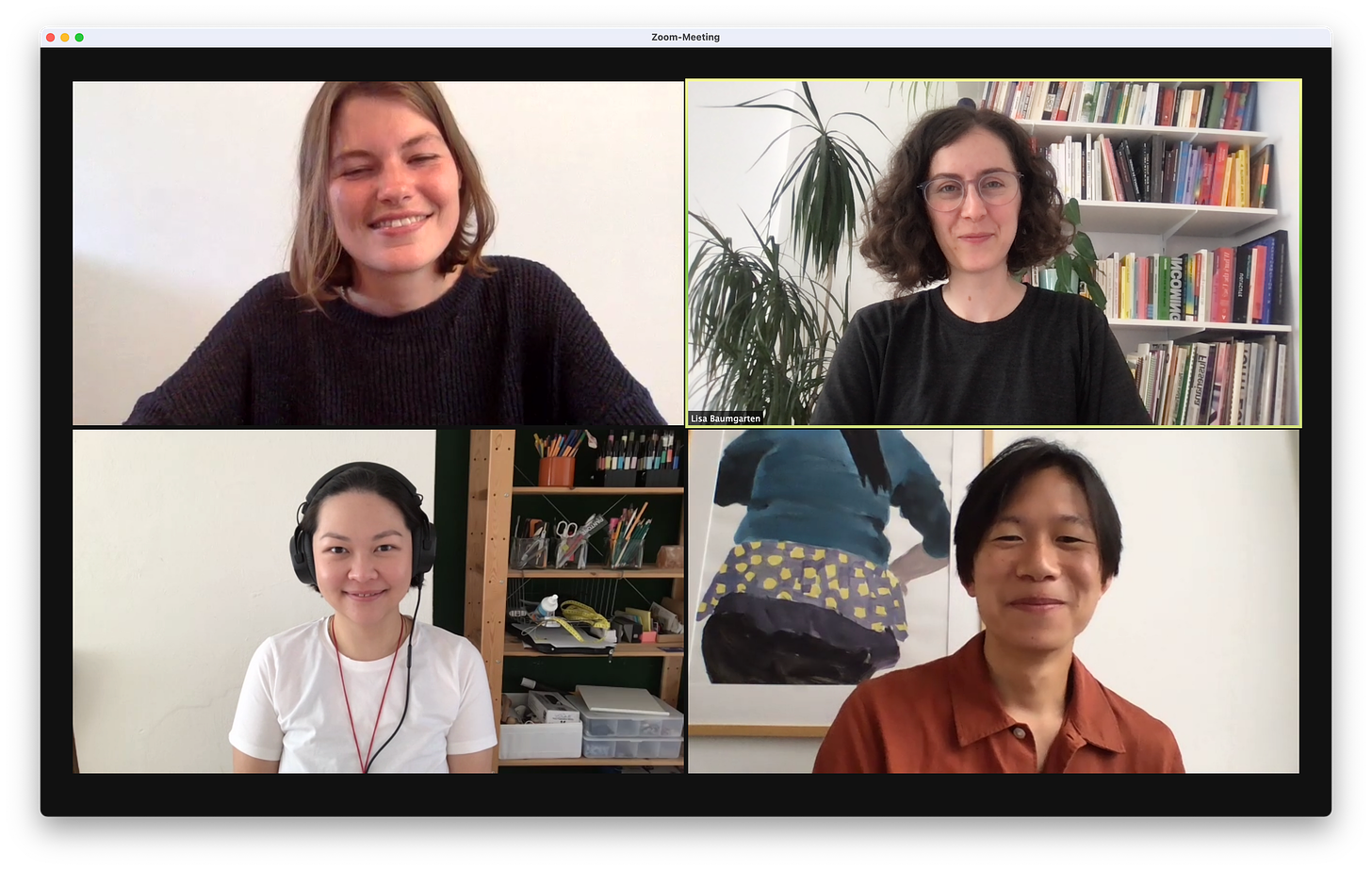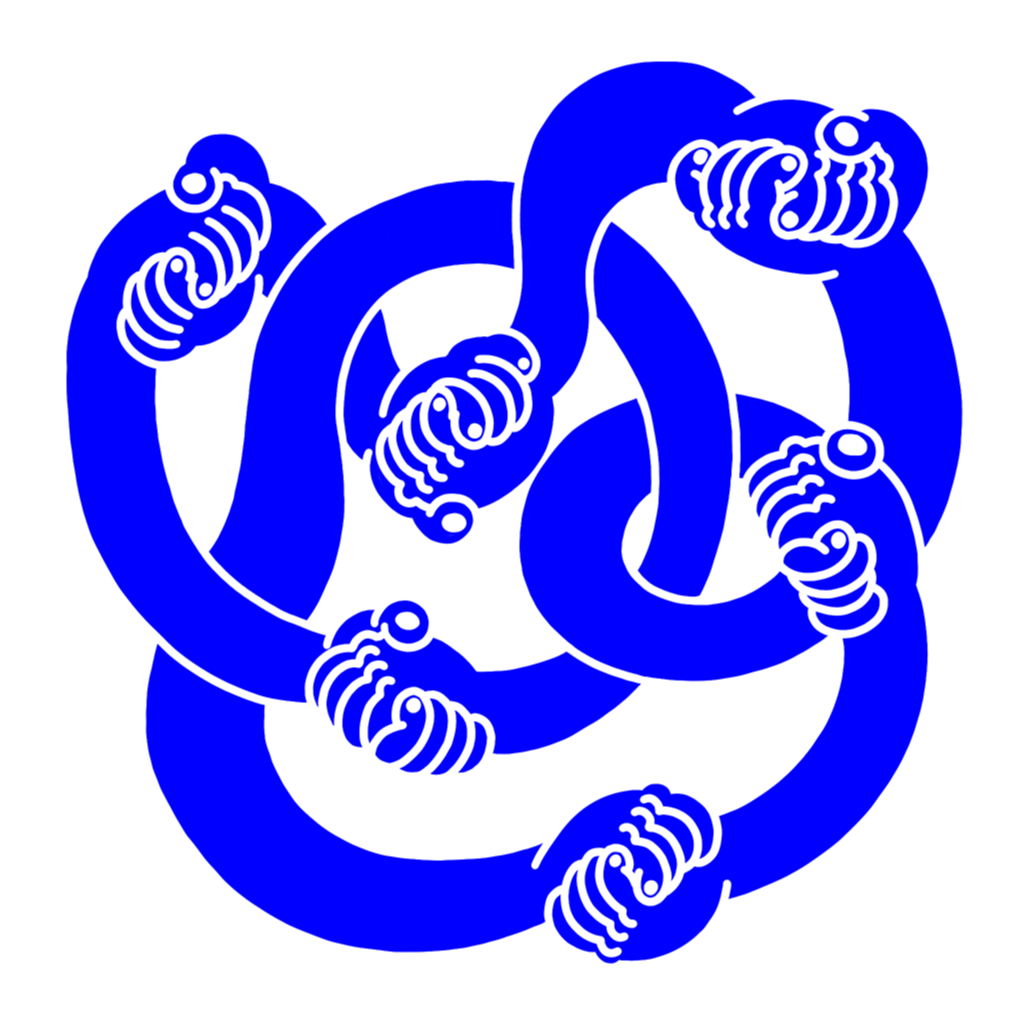Teaching Design – Infrequent Newsletter #3
Dear design teachers/learners and bibliography-lovers,
thanks for subscribing (or staying subscribed) to this mailing list and following the research project!
Since the bibliography is curated by me and therefore influenced by my personal research interests as well as my ongoing teaching/learning practice I am going to share some resources from my current research project on teaching/learning formats as critical interventions.
This newsletter therefore has a focus on institutional critique in the field of art and design, specifically in higher education.
Don't forget: The open call for contributions is ongoing!
→ Find out how to contribute here.
Warm wishes and until next time,
Lisa
Added to the bibliography
Catherine Somzé: We Are the Institution – From Shared Precarity to Shared Responsibility. In: Rosa te Velde and Michelle Kasprzak (eds.): Commissioned Critique, Rietveld Academie / Sandberg Instituut, November 2021, pp. 133–40.
"A learning community is not a smooth nor a monolithic entity. It is a social field and, as such, it is not one of immanent togetherness. What defines it is a perpetual hegemonic struggle that flows from positions of precarity. […] To acknowledge this struggle means art educational institutions become self-critical; they become aware of what makes a learning community possible in the first place."
→ The publication is accessible online here.
Miriam Schickler, Ahmed Isam Aldin, and Ulf Aminde: Negotiating Opacity and Transparency in the Art Academy. In: Elisa Liepsch, Julian Warner, and Matthias Pees (eds.): Allianzen – Kritische Praxis an Weißen Institutionen. Bielefeldt: transcript, 2020, pp. 174–89.
"When we first received the invitation to write an article for this publication, we were wondering how we could formulate a critique that would not bite (off) the hand that continues to feed us. Which, to a big extent, is a white institution that provides us with the infrastructure to run the *foundationClass and a platform from which to apply for funding for the continuation and development of the program. Rather than directly attacking the institution, we decided to have a recorded conversation about one of the major conflicts Ulf Aminde and I have been facing since the beginning of our work, namely the constant negotiation between the participants’ right to opacity, defined by Édouard Glissant (1997: 189ff) as the right to not comply with the demand to be knowable, understood and transparent, and the transparency stipulated by donors, journalists and, of course, the institution of the art academy itself."
→ The article is accessible here.
Philippe Saner, Sophie Vögele, and Pauline Vessely: Schlussbericht Art.School.Differences – Researching Inequalities and Normativites in the Field of Higher Art Education, 2022.
From the website ART.SCHOOL.DIFFERENCES:
"The Art.School.Differences final report, the statements by the partnering schools, and the meta-statement by way of response by the International Advisory Board are available on final report and statements.
Chapter 9 summarizes the conclusions (in German), and chapter 10 lists identified fields of action (in German) to enable a more inclusive art school."
→ The report is accessible here.
Additionally I highly recommend reading this article by Futuress and depatriarchise design.
Sara Ahmed: On being included. Racism and Diversity in Institutional Life. Durham: Duke University Press, 2012.
Words from diskrit-kubi.net:
"What does diversity do? What are we doing when we use the language of diversity? Sara Ahmed offers an account of the diversity world based on interviews with diversity practitioners in higher education, as well as her own experience of doing diversity work. Diversity is an ordinary, even unremarkable, feature of institutional life. Yet diversity practitioners often experience institutions as resistant to their work, as captured through their use of the metaphor of the »brick wall.« On Being Included offers an explanation of this apparent paradox. It explores the gap between symbolic commitments to diversity and the experience of those who embody diversity. Commitments to diversity are understood as »non-performatives« that do not bring about what they name. The book provides an account of institutional whiteness and shows how racism can be obscured by the institutionalization of diversity. Diversity is used as evidence that institutions do not have a problem with racism. On Being Included offers a critique of what happens when diversity is offered as a solution. It also shows how diversity workers generate knowledge of institutions in attempting to transform them."
*foundationClass – the book. Berlin: NGBK Neue Gesellschaft für Bildende Kunst, 2022.
Words from the authors:
*foundationClass – the book hinterfragt kritisch die normativen Ein- und Ausschlussmechanismen von Kunsthochschulen. Diese komplexen Verhandlungen finden sowohl innerhalb der *foundationClass, aber auch in der Verwaltung, in Fachgebietssitzungen und in der Mensa statt und laufen weder widerspruchslos noch konfliktfrei ab. Die hier versammelten multiperspektivischen und mehrsprachlichen Beiträge beziehen sich auf konkrete Erfahrungen innerhalb der Institutionen und zeigen auf, wie essenziell ein kontinuierliches Beharren auf Auseinandersetzung für das Gelingen eines machtkritischen Programms ist. Angesprochen sind potenzielle Kompliz*innen, die auch davon überzeugt sind, dass selbstreflektierte Macht- und Herrschaftskritik fundamentaler Teil der künstlerischen Lehre, jeglicher kulturellen Produktion und Ausgangspunkt für das Schaffen weiterer Allianzen und Formen der Solidarisierung sein muss.
→ The book is accessible online here.
Andrea Fraser: From the Critique of Institutions to an Institution of Critique. In: Artforum International, Vol. 44 (1), September 2005, pp. 100–106.
"Every time we speak of the “institution” as other than “us,” we disavow our role in the creation and perpetuation of its conditions. We avoid responsibility for, or action against, the everyday complicities, compromises, and censorship—above all, self-censorship—which are driven by our own interests in the field and the benefits we derive from it."
→ Access the essay here.
Conversations continued …
In summer 2021 we had the pleasure to talk to Alice Wong and Simpson Tse about studying design in the Netherlands and Hong Kong, unsustainable structures in art schools and reflections on mutual care.
→ Read the conversation here.
→ Find out more about the conversation series here.
ongoing Open Call
We invite contributions from you; design educators, students, alumni, researchers, pedagoges, enthusiasts and others to submit and share the sources which are reference points and/or inspiration to your practice! Your contribution will be published in our infrequent newsletter and in our text-based bibliography.
→ Find out how to contribute here.
Info
Teaching Design started as a collectively gathered bibliography focusing on design education from intersectional feminist and decolonial perspectives. Since its launch in September 2019, it has expanded into conversational formats, workshops, a temporary library and a space for reflections, which all has led to the platform in its current form.
→ Learn more about the research project here.
Currently the bibliography as well as this newsletter is curated and edited by Lisa Baumgarten unless mentioned otherwise.



